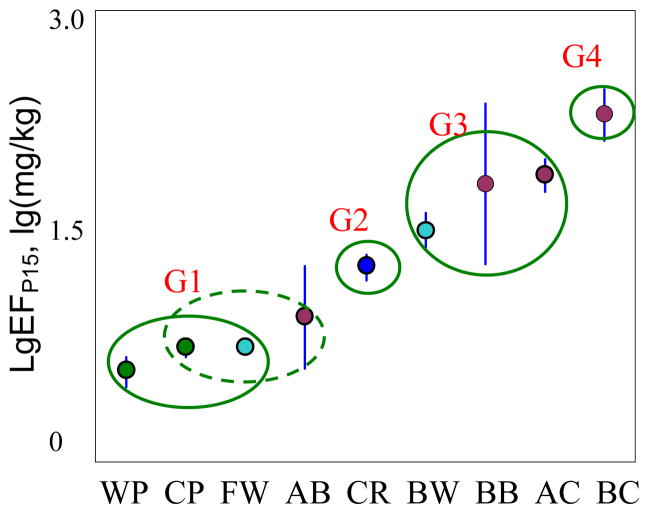Figure 1.
Comparison of EFP15 among various fuel types combusted in residential stoves. Means and standard deviations of log-transformed EFP15 are shown. Four significant groups of G1, G2, G3, and G4 can be distinguished based on the result of ANOVA and a multiple comparison. WP, CP, FW, AB, CR, BW, BB, AC, and BC represent wood pellets (n=11), corn straw pellets (n=12), fuel wood (n=66), anthracite briquette (n=5), crop residue (n=25), brushwood (n=10), bituminous briquette (n=4), anthracite chunk (n=4), and bituminous chunk (n=11), respectively. Among the four fuels (WP, CP. FW, and AB) in G1, there was no difference among EFPAH for CP, FW, and AB (a dashed ellipse), meanwhile, EFPAH for WP, CP, and FW were different, but not statistically significant (p > 0.10).

